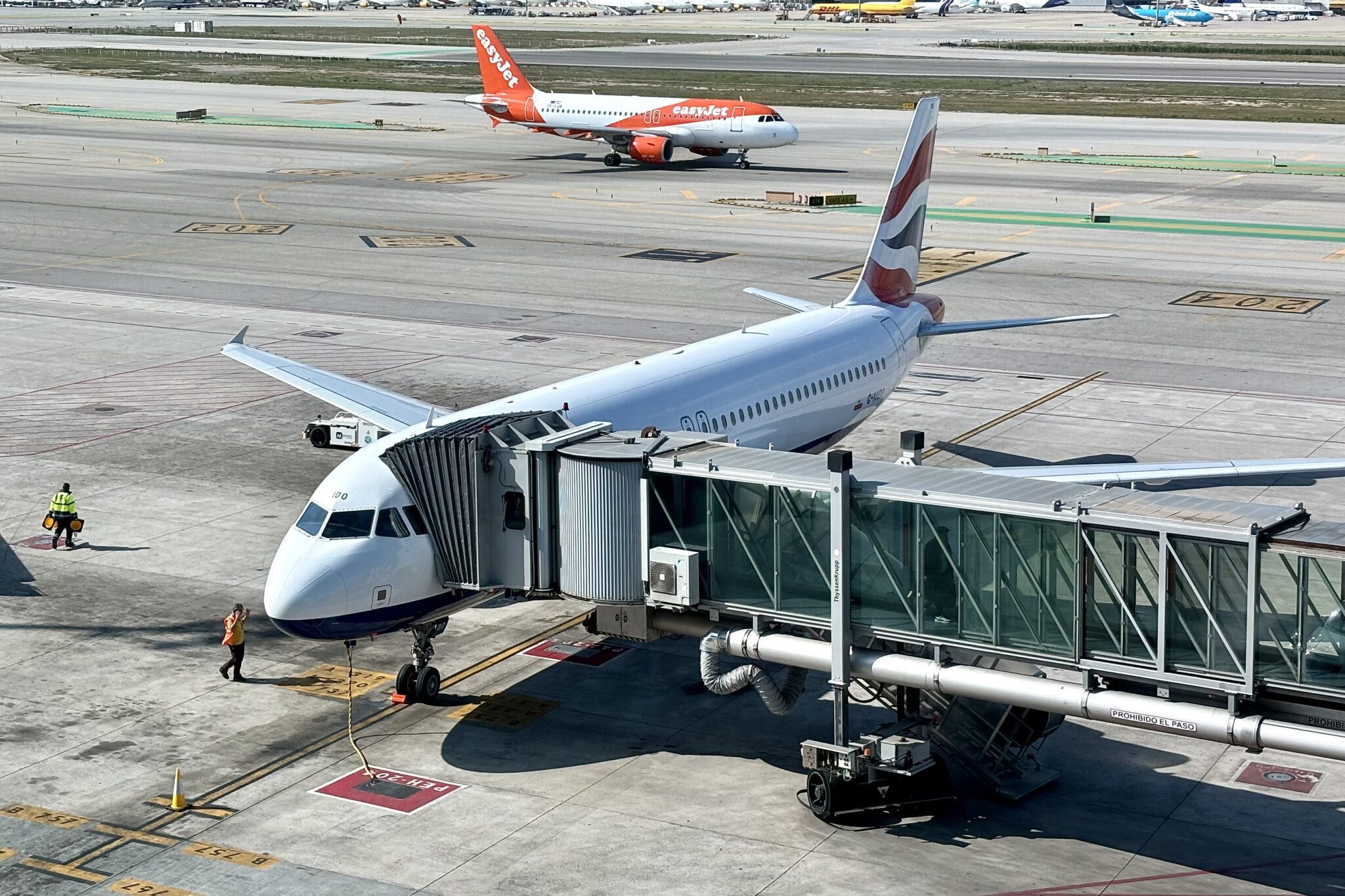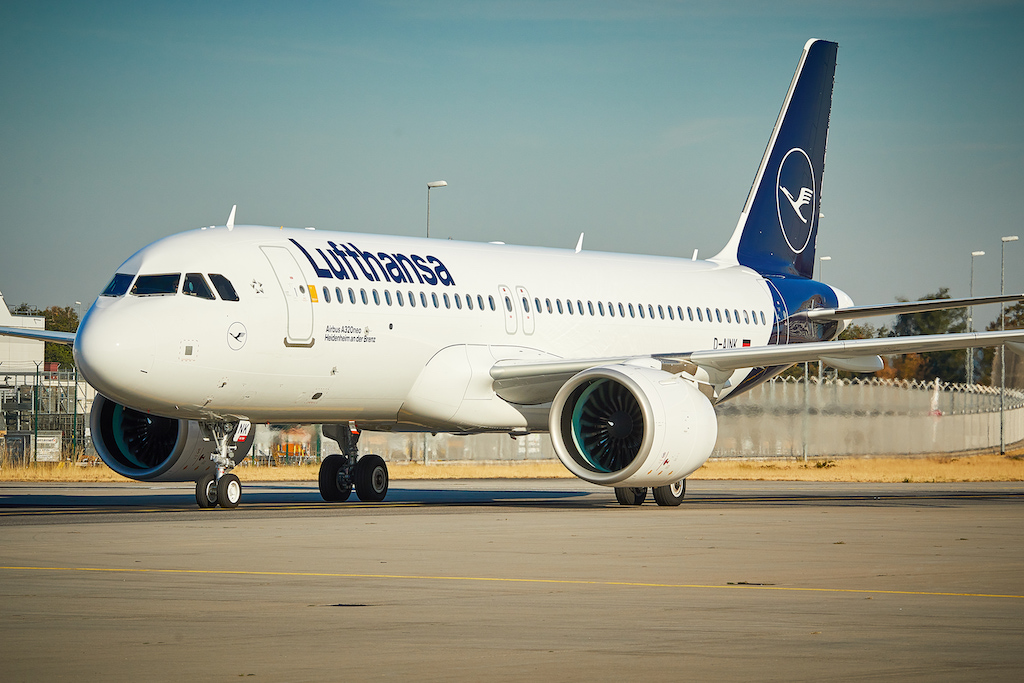Reagan National Airport, adjacent to downtown Washington, D.C., is one of just two airports in the U.S. with a perimeter that limits how far airlines can fly. While several exemptions to that rule have been added since 2000, a new group backed by Delta Air Lines wants to more than double the number of long-distance flights.
The Capital Access Alliance, which has 24 members including Delta, says that removing or easing the perimeter would “make air travel more affordable and efficient” to and from Washington, D.C. On Wednesday, Representatives Hank Johnson (D-Ga.) and Burgess Owens (R-Utah) — both states with large Delta hubs — introduced legislation to create 56 new exemptions to National’s perimeter rule, or 28 new pairs. A pair is needed to operate a round-trip flight. Incumbent airlines, including Delta, would be eligible for 20 pairs, and non-incumbents, like Frontier Airlines, the remaining eight.
All flights from Washington National are limited by a 1,250-mile perimeter that falls just west of places like Dallas-Fort Worth and Minneapolis-St. Paul. There are 20 exemptions to the rule held by Alaska Airlines, American Airlines, Delta, Frontier, JetBlue Airways, Southwest Airlines, and United Airlines that allow flights to destinations including Austin, Los Angeles, Phoenix, and San Juan.
New York LaGuardia is the only other airport in the U.S. with a similar distance limit on flights. Its perimeter is set at 1,500 miles with a carve-out for Denver and flights on Saturdays. The difference with Washington National is the local airport operator, the Port Authority of New York and New Jersey, manages the perimeter at LaGuardia, and not the federal government.
In both New York and Washington, D.C., the decades-old perimeters were implemented to push longer-distance flights to larger airports designed for such operations. The main long-distance and international gateways for New York are JFK and Newark airports. D.C.’s equivalents are Baltimore-Washington and Dulles airports.
The Delta-backed legislation is an opening salvo in what will likely be a heated fight over Washington National in the upcoming Federal Aviation Reauthorization bill. Washington-area representatives, including those from Maryland and Virginia, oppose new slot exemptions at the close-in airport. As do the airport operator, the Metropolitan Washington Airports Authority (MWAA), and United Airlines, which has a large hub at D.C.’s main international gateway, Dulles airport.
“This is a political landmine,” Cranky Flier author Brett Snyder wrote Tuesday. He noted that, with the FAA currently leader-less and an air traffic control staffing shortage limiting flights, there are “far bigger issues” for Congress to focus on than the perimeter at Washington National.
The key argument for both Capital Access and representatives Johnson and Owens appears to be airfares. In a statement Wednesday, Johnson said: “By limiting the number of flights in and out of National Airport, we are squeezing consumers … Travelers who want to visit the capital region face the most expensive domestic ticket prices compared to other major markets because of limited competition.”
Johnson’s statement, however, is not true, at least based on the latest U.S. Bureau of Transportation Statistics data on airfares. They show domestic average fares were $403.50 from Washington National in the fourth quarter. That is almost $10 more than the national average of $393.85 but lower than, for example, in the larger Los Angeles and Dallas-Fort Worth areas. And travelers in the Washington area have multiple alternative airports, including the region’s busiest Baltimore-Washington (BWI) where average fares were just $356.32 — or nearly $38 cheaper than nationally — in the December quarter.
Average airfares at both Johnson’s home airport of Atlanta and Owens’ home airport of Salt Lake City are notably higher than at Washington National. Atlanta stood at $408.76 and Salt Lake City at $439.50 in the fourth quarter.
Airfares aside, there is the issue of airport capacity at Washington National. MWAA recently completed a $1 billion upgrade to the airport, known as Project Journey, that included a new regional concourse and expanded the secure area in Terminal 2. The expansion was in response to a boom in passenger traffic in recent years to nearly 24 million travelers in 2019; traffic numbers had fully recovered to that level last year. The terminal complex, prior to the expansion, was designed for roughly 15 million annual passengers.
The addition of up to 28 new round-trip, long-distance flights could increase pressure on the facilities at Washington National. Due to their distance — at least more than 1,250 miles — they almost certainly would be flown with larger Airbus A320 or Boeing 737 family aircraft that can seat up to 200 passengers.
There are also legitimate concerns about the effect on United’s hub operations at Dulles. However, with the airport remaining the primary international gateway to the D.C.-region, the impact would likely be limited.
A 2021 report by the U.S. Government Accountability Office was inconclusive about the effect of removing the perimeter or adding new exemptions at Washington National. “It would be challenging to predict or quantify such effects,” the GAO found.
The last attempt to change the perimeter at Washington National in 2016 would have moved it to 1,425 miles from the current 1,250 miles. Backed by legislators from Texas, it would have allowed for nonstop flights to Austin and San Antonio. The attempt failed.
A spokesperson for American, the largest airline at Washington National, could not be reached for comment.





